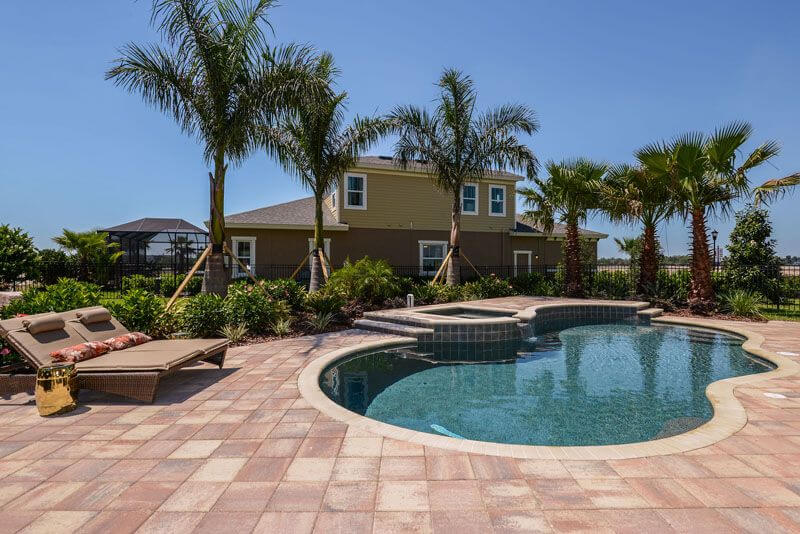What Affects My Swimming Pool Water Chemistry?

Even with proper care and maintenance, a swimming pool can still get out of balance and need a little adjusting. Your water chemistry is constantly changing due to environmental factors, usage, and even the toys you put in the pool. Learn five factors that play a major role in your swimming pool water chemistry, and how you can control common issues in this area.
Swimming Pool Water Chemistry: pH Balance
pH is the major factor you should keep balanced when maintaining your swimming pool water chemistry. pH refers to the level of acidity in your water, and comes from the use of chemicals to keep it balanced and free from contaminants and algae growth. You want your pH to remain between 7.4 to 7.6 at all times to avoid burning eyes and to allow for free chlorine use.
Swimming Pool Alkalinity
Closely connected to pH, the alkalinity is the amount of base, or hydrogen ions, in your water. It also refers to the ability of your water to contain and reduce the loss of hydrogen. Keeping your alkalinity balanced helps to keep your pH levels optimal when additional acids or bases are introduced to the water. You want your pool’s alkalinity to be between 80 and 150 parts per million (PPM).
Pool Water Calcium Hardness Levels
Your pool has dissolved calcium salts in its water. These can increase or decrease from the oils and salts on people’s skin, from debris that falls into your pool, and from the chemical reactions that form from maintaining your water balance. You want to keep these levels around 250 ppm. If the calcium level is too low, it can create pitting in the plaster, while high amounts of calcium make the water cloudy and can result in scaling.
TDS (Total Dissolved Solids) in Your Swimming Pool
When a pool has been in use for a long time, things like suntan lotion, chlorides, dirt, debris, algaecides, and other contaminants can be introduced into the water from leaves, tree bark, dirt, skin chemistry, and other factors. TDS can’t be avoided, but it should be kept under 450 ppm.
Pool Chlorine Levels
Chlorine is, for many people, a vital part of keeping the chemistry in their water properly balanced. Too much chlorine, and you’ll end up with burning in the eyes and a strong odor. Too little, and the pool’s alkalinity and pH will be out of control, leading to things like cloudy water and algae growth. Ideal chlorine levels should be at 0.2ppm or less, and free chlorine should be in the range of 1 to 3 ppm.
Pool ownership in Florida is a beautiful thing. And with these few simple steps, you can make sure your swimming pool stays in great shape all season long.
About Tampa Bay Pools
Tampa Bay Pools is a custom pool builder serving Tampa Bay, Brandon, Clearwater, Riverview, Brandon, Lithia, Valrico, Odessa, Lutz, Plant City, Davenport, Seffner, and St. Petersburg areas, who understands the importance and value of your own backyard escape. That’s why we build spectacular new inground swimming pools that are easy to maintain.
We offer a wide variety of custom projects including residential or commercial swimming pool building, stunning custom features to customize your pool, outdoor enclosures for your backyard oasis, and custom spas.
Our pools can be designed to fit any style or budget; we even offer swimming pool financing options.
